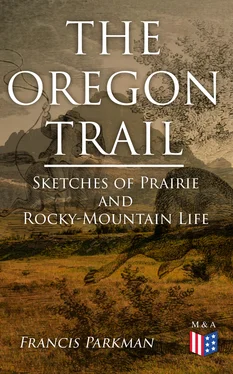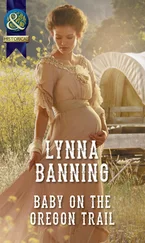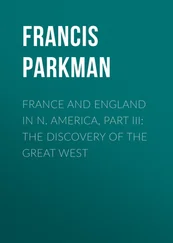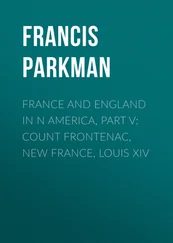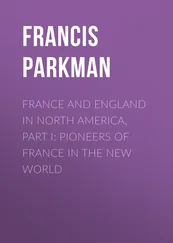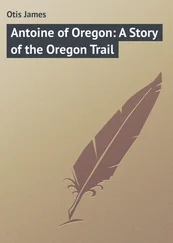Francis Parkman
The Oregon Trail: Sketches of Prairie and Rocky-Mountain Life
Madison & Adams Press, 2021
Contact: info@madisonadamspress.com
EAN 4064066384142
This is a publication of Madison & Adams Press. Our production consists of thoroughly prepared educational & informative editions: Advice & How-To Books, Encyclopedias, Law Anthologies, Declassified Documents, Legal & Criminal Files, Historical Books, Scientific & Medical Publications, Technical Handbooks and Manuals. All our publications are meticulously edited and formatted to the highest digital standard. The main goal of Madison & Adams Press is to make all informative books and records accessible to everyone in a high quality digital and print form.
CHAPTER I THE FRONTIER
CHAPTER II BREAKING THE ICE
CHAPTER III FORT LEAVENWORTH
CHAPTER IV “JUMPING OFF”
CHAPTER V “THE BIG BLUE”
CHAPTER VI THE PLATTE AND THE DESERT
CHAPTER VII THE BUFFALO
CHAPTER VIII TAKING FRENCH LEAVE
CHAPTER IX SCENES AT FORT LARAMIE
CHAPTER X THE WAR PARTIES
CHAPTER XI SCENES AT THE CAMP
CHAPTER XII ILL LUCK
CHAPTER XIII HUNTING INDIANS
CHAPTER XIV THE OGALLALLA VILLAGE
CHAPTER XV THE HUNTING CAMP
CHAPTER XVI THE TRAPPERS
CHAPTER XVII THE BLACK HILLS
CHAPTER XVIII A MOUNTAIN HUNT
CHAPTER XIX PASSAGE OF THE MOUNTAINS
CHAPTER XX THE LONELY JOURNEY
CHAPTER XXI THE PUEBLO AND BENT’S FORT
CHAPTER XXII TETE ROUGE, THE VOLUNTEER
CHAPTER XXIII INDIAN ALARMS
CHAPTER XXIV THE CHASE
CHAPTER XXV THE BUFFALO CAMP
CHAPTER XXVI DOWN THE ARKANSAS
CHAPTER XXVII THE SETTLEMENTS
Table of Contents
Last spring, 1846, was a busy season in the City of St. Louis. Not only were emigrants from every part of the country preparing for the journey to Oregon and California, but an unusual number of traders were making ready their wagons and outfits for Santa Fe. Many of the emigrants, especially of those bound for California, were persons of wealth and standing. The hotels were crowded, and the gunsmiths and saddlers were kept constantly at work in providing arms and equipments for the different parties of travelers. Almost every day steamboats were leaving the levee and passing up the Missouri, crowded with passengers on their way to the frontier.
In one of these, the Radnor, since snagged and lost, my friend and relative, Quincy A. Shaw, and myself, left St. Louis on the 28th of April, on a tour of curiosity and amusement to the Rocky Mountains. The boat was loaded until the water broke alternately over her guards. Her upper deck was covered with large weapons of a peculiar form, for the Santa Fe trade, and her hold was crammed with goods for the same destination. There were also the equipments and provisions of a party of Oregon emigrants, a band of mules and horses, piles of saddles and harness, and a multitude of nondescript articles, indispensable on the prairies. Almost hidden in this medley one might have seen a small French cart, of the sort very appropriately called a “mule-killer” beyond the frontiers, and not far distant a tent, together with a miscellaneous assortment of boxes and barrels. The whole equipage was far from prepossessing in its appearance; yet, such as it was, it was destined to a long and arduous journey, on which the persevering reader will accompany it.
The passengers on board the Radnor corresponded with her freight. In her cabin were Santa Fe traders, gamblers, speculators, and adventurers of various descriptions, and her steerage was crowded with Oregon emigrants, “mountain men,” negroes, and a party of Kansas Indians, who had been on a visit to St. Louis.
Thus laden, the boat struggled upward for seven or eight days against the rapid current of the Missouri, grating upon snags, and hanging for two or three hours at a time upon sand-bars. We entered the mouth of the Missouri in a drizzling rain, but the weather soon became clear, and showed distinctly the broad and turbid river, with its eddies, its sand-bars, its ragged islands, and forest-covered shores. The Missouri is constantly changing its course; wearing away its banks on one side, while it forms new ones on the other. Its channel is shifting continually. Islands are formed, and then washed away; and while the old forests on one side are undermined and swept off, a young growth springs up from the new soil upon the other. With all these changes, the water is so charged with mud and sand that it is perfectly opaque, and in a few minutes deposits a sediment an inch thick in the bottom of a tumbler. The river was now high; but when we descended in the autumn it was fallen very low, and all the secrets of its treacherous shallows were exposed to view. It was frightful to see the dead and broken trees, thick-set as a military abatis, firmly imbedded in the sand, and all pointing down stream, ready to impale any unhappy steamboat that at high water should pass over that dangerous ground.
In five or six days we began to see signs of the great western movement that was then taking place. Parties of emigrants, with their tents and wagons, would be encamped on open spots near the bank, on their way to the common rendezvous at Independence. On a rainy day, near sunset, we reached the landing of this place, which is situated some miles from the river, on the extreme frontier of Missouri. The scene was characteristic, for here were represented at one view the most remarkable features of this wild and enterprising region. On the muddy shore stood some thirty or forty dark slavish-looking Spaniards, gazing stupidly out from beneath their broad hats. They were attached to one of the Santa Fe companies, whose wagons were crowded together on the banks above. In the midst of these, crouching over a smoldering fire, was a group of Indians, belonging to a remote Mexican tribe. One or two French hunters from the mountains with their long hair and buckskin dresses, were looking at the boat; and seated on a log close at hand were three men, with rifles lying across their knees. The foremost of these, a tall, strong figure, with a clear blue eye and an open, intelligent face, might very well represent that race of restless and intrepid pioneers whose axes and rifles have opened a path from the Alleghenies to the western prairies. He was on his way to Oregon, probably a more congenial field to him than any that now remained on this side the great plains.
Early on the next morning we reached Kansas, about five hundred miles from the mouth of the Missouri. Here we landed and leaving our equipments in charge of my good friend Colonel Chick, whose log-house was the substitute for a tavern, we set out in a wagon for Westport, where we hoped to procure mules and horses for the journey.
It was a remarkably fresh and beautiful May morning. The rich and luxuriant woods through which the miserable road conducted us were lighted by the bright sunshine and enlivened by a multitude of birds. We overtook on the way our late fellow-travelers, the Kansas Indians, who, adorned with all their finery, were proceeding homeward at a round pace; and whatever they might have seemed on board the boat, they made a very striking and picturesque feature in the forest landscape.
Westport was full of Indians, whose little shaggy ponies were tied by dozens along the houses and fences. Sacs and Foxes, with shaved heads and painted faces, Shawanoes and Delawares, fluttering in calico frocks, and turbans, Wyandottes dressed like white men, and a few wretched Kansas wrapped in old blankets, were strolling about the streets, or lounging in and out of the shops and houses.
As I stood at the door of the tavern, I saw a remarkable looking person coming up the street. He had a ruddy face, garnished with the stumps of a bristly red beard and mustache; on one side of his head was a round cap with a knob at the top, such as Scottish laborers sometimes wear; his coat was of a nondescript form, and made of a gray Scotch plaid, with the fringes hanging all about it; he wore pantaloons of coarse homespun, and hob-nailed shoes; and to complete his equipment, a little black pipe was stuck in one corner of his mouth. In this curious attire, I recognized Captain C. of the British army, who, with his brother, and Mr. R., an English gentleman, was bound on a hunting expedition across the continent. I had seen the captain and his companions at St. Louis. They had now been for some time at Westport, making preparations for their departure, and waiting for a re-enforcement, since they were too few in number to attempt it alone. They might, it is true, have joined some of the parties of emigrants who were on the point of setting out for Oregon and California; but they professed great disinclination to have any connection with the “Kentucky fellows.”
Читать дальше
